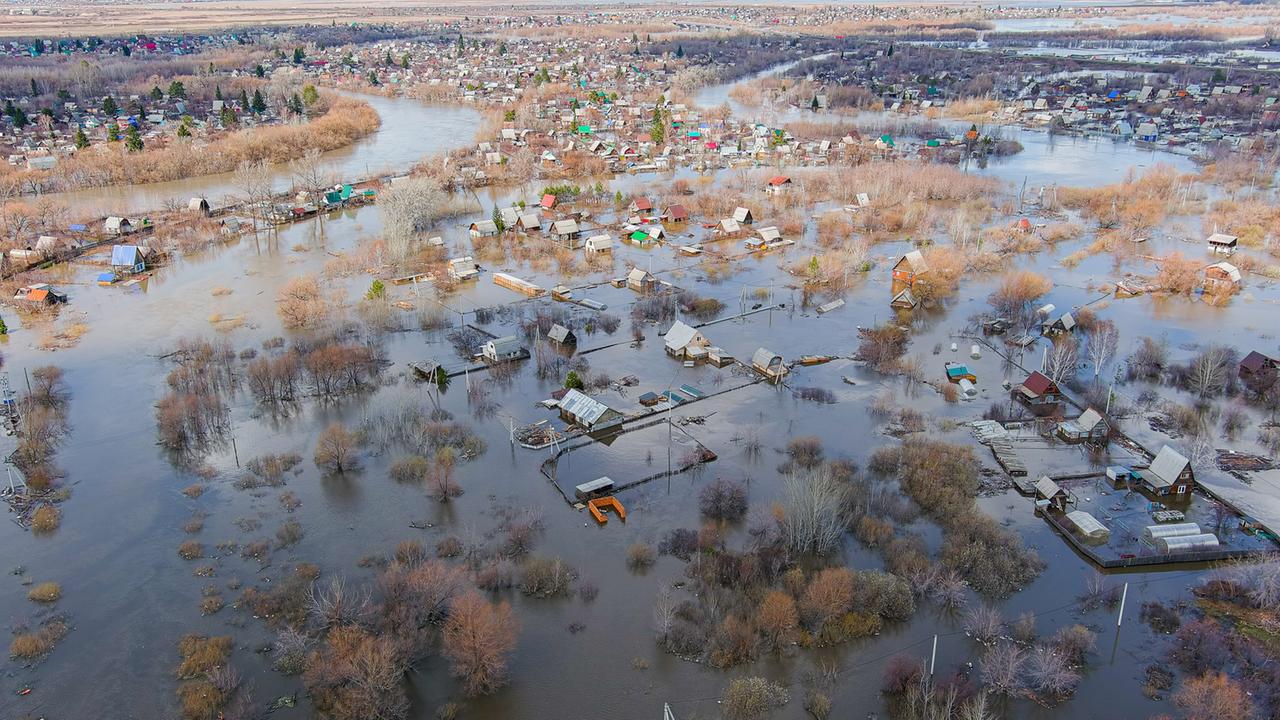A new catastrophe is looming in the Russian flood-prone Kurgan region: the floods have inundated disused uranium mines and are flushing radioactive substances into the Tobol River, from which drinking water is also obtained.
In the dramatic spring flood, another, invisible danger threatens southeast of the Urals – in the Kurgan region, about 1,700 kilometers east of Moscow. Nuclear physicist Andrej Osharovsky from the NGO Social Ecological Union looks with concern at freely accessible flood photographs from the region.
“I spoke to locals. They say that the water there is about one and a half meters high,” he says. Satellite images would confirm this. What is meant is not the village in the photos – it is on a hill. Osharovsky points to the surrounding lowlands. “There are wells there. Wells from a test mine that was built during Soviet times sometime in the mid-1980s.”
Uranium dissolved from rock with sulfuric acid
Nuclear waste expert Osharovsky is referring to drilling for underground uranium mining. There are hundreds of these wells in the Kurgan region. Many have been sealed, but many are rotting and rusting away. They are now partially flooded. The particular danger lies in a method of mining uranium that could perhaps be charitably described as extremely short-sighted.
“Instead of extracting the uranium ore from a depth of 400 meters and then chemically extracting the uranium, this second part was relocated underground,” explains Osharovsky. That was cheaper, but also much more dangerous for the environment. “Underground well leaching is what it’s called.” Diluted sulfuric acid is pumped into the ore, the acid dissolves everything there and converts uranium into a soluble form.
Uranium salts are highly toxic and radioactive
“The idea is not to produce an underground lake of uranium solution, but rather to pump up this uranium solution and filter out the uranium,” says the nuclear physicist. Remnants of the toxic, radiant mud remained underground – in the best case scenario.
“A few years ago I examined these old wells that were reported to have been abandoned,” says expert Osharovsky. Even on a completely dry day, water would seep out – and not just that. “Because it came from a former test mine in which uranium was dissolved with acid. And with my measuring devices I found places with contamination around every drill hole I could find there.”
The Tobol River, which has now overflowed its banks and also flooded boreholes, is also a source of drinking water for the large city of Kurgan, 100 kilometers away, with its 300,000 inhabitants. And the uranium salts are not only highly toxic, but also radioactive, warns Osharovsky. “Now these lowland fields where uranium was mined in the 1980s are flooded. Uranium inevitably ends up in the river.” Although this would significantly dilute the uranium, it would still end up in the drinking water.
Rosatom downplays concerns
“There is the so-called collective dose when a large number of people are exposed to small amounts of radioactive contamination,” explains the expert. Some of them who absorb uranium through drinking water are then exposed to internal radiation, which is much more dangerous than external radiation. “No one is saying that everyone who drinks water with a low concentration of uranium will get sick and die. But if 10,000 people drink this water, then several dozen of them may develop health problems.”
In the past, environmentalists have repeatedly warned about uranium mining and its consequences. The Russian atomic energy agency Rosatom has already rejected this as “radiophobia” – i.e. hostility to radiation – coupled with ignorance. And their new uranium mining facilities? They were all above the flood level.
Frank Aischmann, ARD Moscow, tagesschau, April 23, 2024 5:31 p.m





